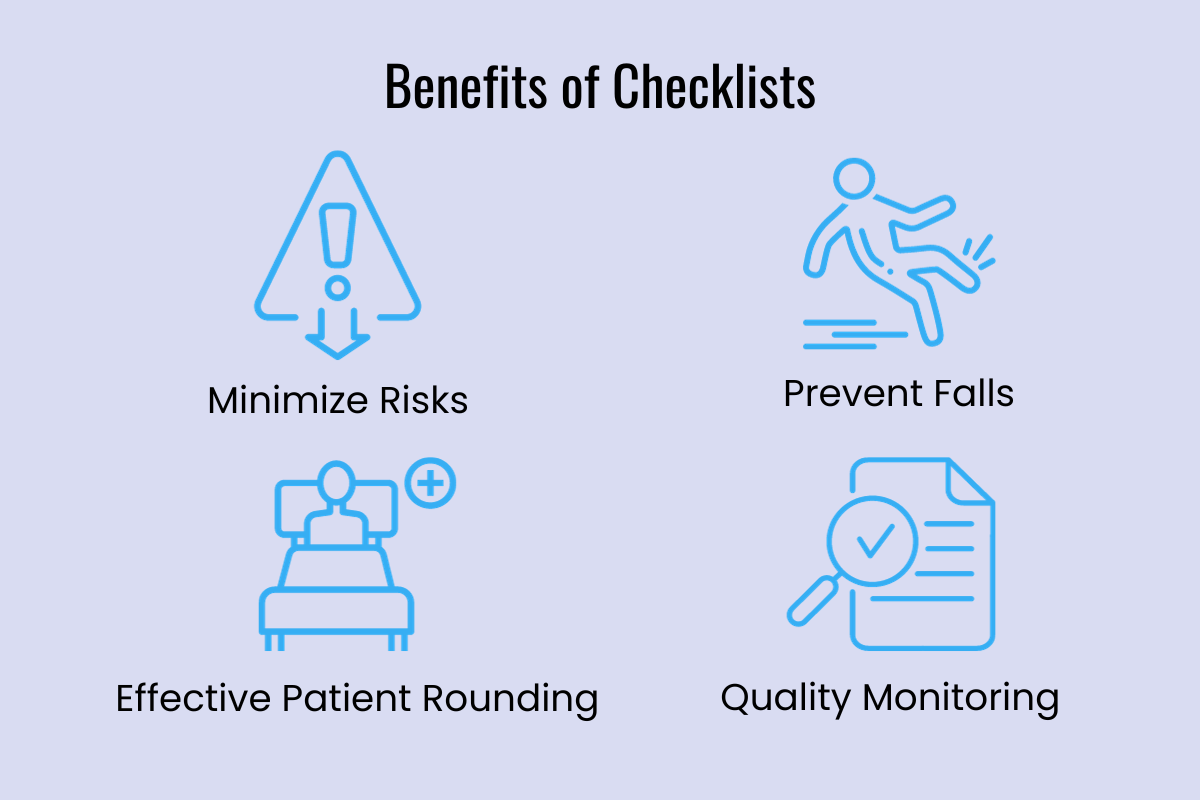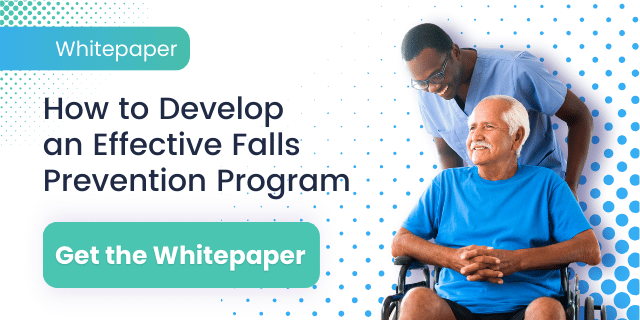Checklists provide a wealth of positive impacts within healthcare organizations. Whether you are looking to effectively report incidents, prevent falls, or reduce overall risk, it all starts with a list. Here are the top reasons why checklists are so important in healthcare.
What are Checklists in Healthcare?
Checklists in healthcare are defined as lists of actions arranged systematically that allow the user to consistently perform each action, record the completion, and minimize errors. In healthcare, checklists can help employees and staff achieve consistently improved outcomes.

Benefits of Checklists in Healthcare
As reimbursements continue to come under scrutiny and organizations look to improve value-based care, achieving operational efficiencies and streamlining processes are a must. Checklists in healthcare provide a robust foundation for systemic organizational improvement, ensuring that critical tasks are not overlooked and that quality and safety standards are consistently met. By integrating healthcare checklists into daily workflows, organizations can realize significant benefits, including:
1. Promote More Effective Patient Rounding
Automated healthcare checklists for hospitals and other types of care environments promote effective, purposeful, and standardized patient rounding. With a well-designed checklist, healthcare teams can ensure they observe key indicators of patient well-being and verify that systems and processes function as intended. This helps pinpoint warning signs of potential incidents—such as medication errors, missed treatments, or safety hazards—before they escalate into adverse events.
For example, structured healthcare checklists used during rounding in hospitals can guide staff through essential tasks such as verifying pain management protocols, confirming scheduled treatments, and addressing patient concerns.
These standardized processes not only improve patient outcomes but also enhance communication between clinical teams.
2. Improve Quality Monitoring
Healthcare checklists simplify the complex task of monitoring and maintaining quality standards across the entire organization. By providing a clear framework for data collection and outcome measurement, checklists ensure that staff can easily track clinical performance, identify trends, and share insights in real time.
Healthcare checklists, for instance, can be used to monitor adherence to infection prevention protocols, medication administration guidelines, or post-operative care procedures. This data-driven approach allows organizations to identify areas for improvement and implement targeted interventions that improve patient safety and enhance patient satisfaction.
3. Prevent Falls
Falls are the number one sentinel event in healthcare, with devastating consequences for patients and significant liability for healthcare organizations. Implementing checklists in healthcare creates a structured approach to fall prevention, helping staff consistently assess and mitigate risks.
Think about how many patients a nurse might care for in just one shift—each with unique mobility challenges, medication side effects, or environmental risks. A healthcare checklist acts as a vital memory aid, ensuring that staff perform critical tasks such as assessing patients’ fall risks, verifying that bed rails are appropriately positioned, and clearing clutter from walkways.
By focusing on these key preventive measures, healthcare checklists empower teams to provide high-quality care without relying solely on memory.
Moreover, these tools alleviate cognitive load, allowing caregivers to concentrate on patient interactions rather than recalling every item on a mental to-do list.
4. Minimize Environment of Care Risks
A safe and well-maintained care setting is a cornerstone of patient care, and healthcare checklists play a critical role in ensuring compliance with Environment of Care (EOC) standards. These checklists help organizations monitor and address potential hazards that could jeopardize safety or patient satisfaction, such as:
- Ensuring wet floor signs are used and removed promptly
- Verifying emergency exits are clear and accessible
- Confirming staff adherence to safety protocols, such as wearing non-slip shoes
By embedding these checks into routine workflows, healthcare checklists enable teams to identify and resolve environmental risks in real time, creating a safer and more comfortable setting for patients and staff alike.
5. Support Regulatory Compliance & Accreditation
In addition to improving day-to-day operations, healthcare checklists support compliance with regulatory standards and accreditation requirements. By standardizing procedures and documenting adherence to safety and quality protocols, these tools ensure that organizations are prepared for inspections and audits.
Healthcare checklists also serve as a valuable resource for demonstrating accountability and transparency in patient care. For example, Joint Commission surveyors often evaluate how effectively organizations follow protocols for infection prevention, medication safety, and patient rounding. With robust healthcare checklists in place, organizations can confidently showcase their commitment to achieving and maintaining high standards of care.
Ready to learn more?
Find out how Performance Health Partners can help your healthcare organization achieve the highest quality care in the safest possible environment.



